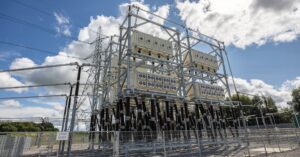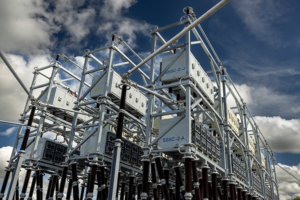
What is Order 1920 and what does it mean for the grid?
July 11, 2024
FERC is reforming regional transmission policy for the first time in a decade with the newly introduced Order 1920. But what is it, and how will it change transmission planning in the US? In this article, Ted Bloch-Rubin shares his insights on Order 1920, focusing on the impact of requiring consideration of alternative transmission technologies in planning studies.

I recently spoke on a panel about getting more from the U.S. transmission grid at the Infocast Transmission & Interconnection Summit, which had an agenda heavily focused on FERC Order 1920 and its implications. My panel brought together experts from EPRI, renewable developers, and power system consultants, ultimately coalescing on the value advanced transmission technologies (ATTs) can bring to accelerate near-term progress on the significant transmission expansion we desperately need.
Order 1920 was launched on May 13, 2024, to reform long-term regional transmission planning for the first time in a decade. It introduced several new requirements for the planning process and evaluation of network upgrades. These requirements include considering multiple long-term scenarios, evaluating multiple pre-determined benefits, establishing a default cost allocation methodology, and mandating the inclusion of a set list of ATTs in planning studies.
All of this is intended to “ensure the transmission grid can meet the nation’s growing demand for reliable electricity with a new rule that outlines how to plan and pay for facilities that regions of the country will need to keep the lights on and power the American economy through the 21st Century.”
In this article, I’ll focus on some commonly asked questions relating to the requirement to consider specific ATTs— dynamic line rating, advanced power flow control (APFC), advanced conductors, and transmission switching—in planning studies. This requirement might seem familiar as it echoes a similar mandate in Order 2023 (which focused on reforming interconnection processes), albeit the specific technologies mandated for consideration differ slightly. APFC is included in both rules, recognizing the value of diverting power from overloaded facilities to underutilized ones in general transmission planning and supporting the connection of new generation.
What is advanced power flow control?
Believe it or not, we barely control how electrons flow in our grids today. The laws of physics mean that electrons flow along the path of least resistance (e.g. shorter lines), and eventually, these become congested while spare capacity exists on parallel lines. Like Patty Pope, CEO of Pacific Gas & Electric, said recently in Bloomberg, “our grid today is underutilized”, which is largely due to these imbalances. APFC refers to modular power electronics-based devices that can control power flows on transmission and distribution grids by changing the reactance of the line on which it is deployed. When deployed in a meshed grid, APFC can reduce transmission bottlenecks that limit the capacity of the grid. Just like a traffic management system, APFC tells electrons to avoid congested transmission lines so that we can transfer more power with the existing lines we have today. In addition to its core functionality of power flow control, APFC provides dynamic services such as improving voltage and transient stability.
Distinct from legacy power flow control systems, such as Phase Shifting Transformers and Fixed Series Capacitors, APFC is designed to be a modular, voltage-agnostic system. This means that more APFC devices can be easily and quickly added to existing deployments over time or devices can be relocated to an alternate site if the network need changes.
How does Order 1920 change how ATTs are considered and evaluated?
Transmission providers must now consider the listed ATTs for each identified transmission need, alongside more traditional options. This applies to both evaluating new regional transmission facilities and upgrading existing transmission facilities. To ensure there is no bias, all technologies/options must be evaluated under the same new criteria and the transmission provider must provide a sufficiently detailed explanation of why certain technologies were or were not incorporated into selected regional transmission facilities. This will accelerate the already growing use of these solutions globally, especially APFC, as more and more large-scale projects have come online over the past couple of years. Soon, it will become hard to believe that there was a time when these solutions were not part of transmission planning everywhere.
On a practical level, how can transmission providers include ATTs in planning and interconnection studies?
To include technologies like APFC in transmission planning and interconnection studies, it must be possible to easily model them in the planning software used by the utility and system operator. The most straightforward option is for native, generic models for these solutions to be made available in all major planning software. We have already developed user-defined models for SmartValveTM for all the main software, and some software providers have already incorporated SmartValve or modular SSSC models into their platforms.
How will APFC accelerate increases in grid capacity and transmission buildout?
APFC balances power flows across circuits to cost-effectively unlock capacity on the existing grid. SmartValve can be deployed within 12-18 months of order, meaning that SmartValve projects can provide benefits for many years while alternative solutions (e.g. new lines) would have still been in permitting or construction. This capacity supports the faster and more cost-efficient transformation of the grid to accommodate new generation and demand while also helping to reduce constraints and uneconomic dispatch of existing generation.
Additionally, by having more dynamic controllability of the grid, SmartValve enables the full utilization of new infrastructure once it is built. This avoids the risk of it becoming underutilized or even a stranded asset due to congestion in the vicinity. SmartValves can also be used to control power flows to utilize aging grid equipment until it reaches its end of asset life, and thus, capital investment decisions can be deferred until there is more certainty on the future system need.
Finally, by providing quickly deployable power flow control, system operators can avoid congestion caused by a line or other grid asset being out-of-service and thus deliver projects faster and with minimum congestion or constraint costs, while also maintaining system reliability.
Is APFC used by utilities today?
SmartValve is deployed by many utilities around the world, including in Europe, the U.S., Latin America, and Australia, to unlock capacity and solve other grid issues. In the U.S. specifically, a new wave of adoption is brewing coming out of FERC Order 2023 and DOE-funded projects. Various projects have already been approved for installation in California, New York, New England, and Georgia in the next two years. In fact, Central Hudson is already using APFC to increase transfer capacity to support the cost-efficient connection of renewables as a more cost-efficient flexible solution that requires 25% less substation space than the alternative of a Fixed Series Capacitor.
In Colombia, ISA TRANSELCA is using APFC to solve grid congestion that was forecast to limit the reliable connection of clean energy in both the near-term and the long-term in the north of the country, providing a more cost-effective and faster to deliver solution than the alternative of reconductoring, constructing a new line, or curtailing new generation.
In Australia, Transgrid is using APFC to resolve thermal limitations on circuits between two states, allowing more renewable energy to flow between states. This provides $11M higher market benefits with less uncertainty and avoids reconductoring a line and constructing a new transformer in a national park.
In the UK, National Grid Electricity Transmission is using APFC to solve grid congestion across multiple boundaries in Northern England to accelerate the integration of new wind power, providing a more cost-efficient solution that can be quickly delivered to deliver huge savings in congestion costs compared to the alternatives of constructing a Phase Shifting Transformer (PST) and a new line.
So, what will the impact of Order 1920 be?
There’s no doubt that Order 1920 represents a significant step forward in regional transmission planning in the U.S. Still, it will only make a real difference if transmission providers embrace its principles as part of their Business-As-Usual network planning. As I’ve outlined, the inclusion of APFC in planning studies will enable faster, cost-effective upgrades to the transmission infrastructure, addressing capacity constraints and accelerating the integration of renewable energy and large energy users. The real-world APFC projects, from the U.S. to Australia, underscore its capability to have this positive impact. We’re certainly moving in the right direction to create the flexible, reliable and affordable grid that is fit for the future. However, there’s still a long road ahead that we can only make progress on by embracing collaboration and new solutions.
Contributing expert
Ted Bloch-Rubin is Director of Business Development for the Americas at Smart Wires, engaging with stakeholders across North America to increase awareness of grid enhancing technologies and how utilities can use them to get more from their existing grids. Ted was Chair of the WATT Coalition for 2021/2022 and remains active in the association’s policy and advocacy work. Prior to joining Smart Wires, Ted worked with in the high-tech transportation industry.
For press related purposes, please contact us at marketing@smartwires.com.
Dive deeper into related content
Explore our products and services
Talk to our experts



